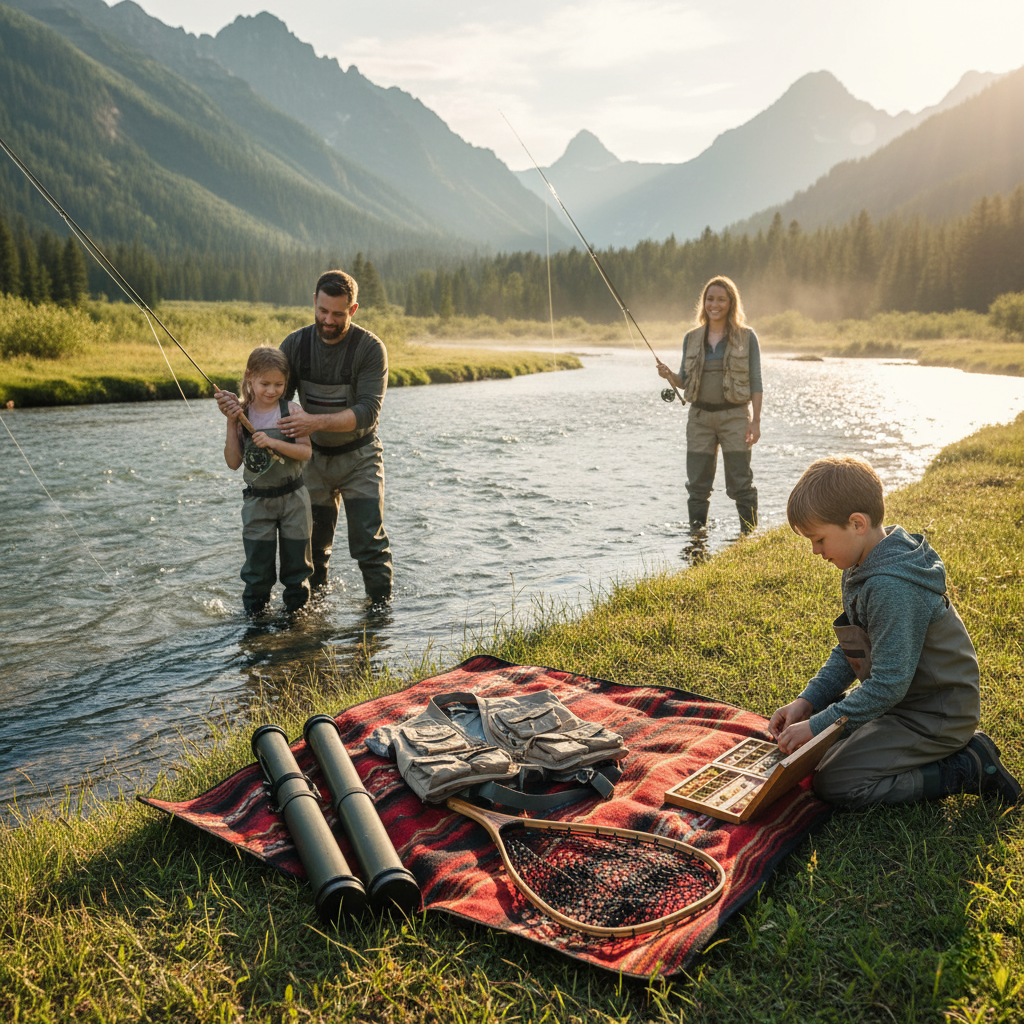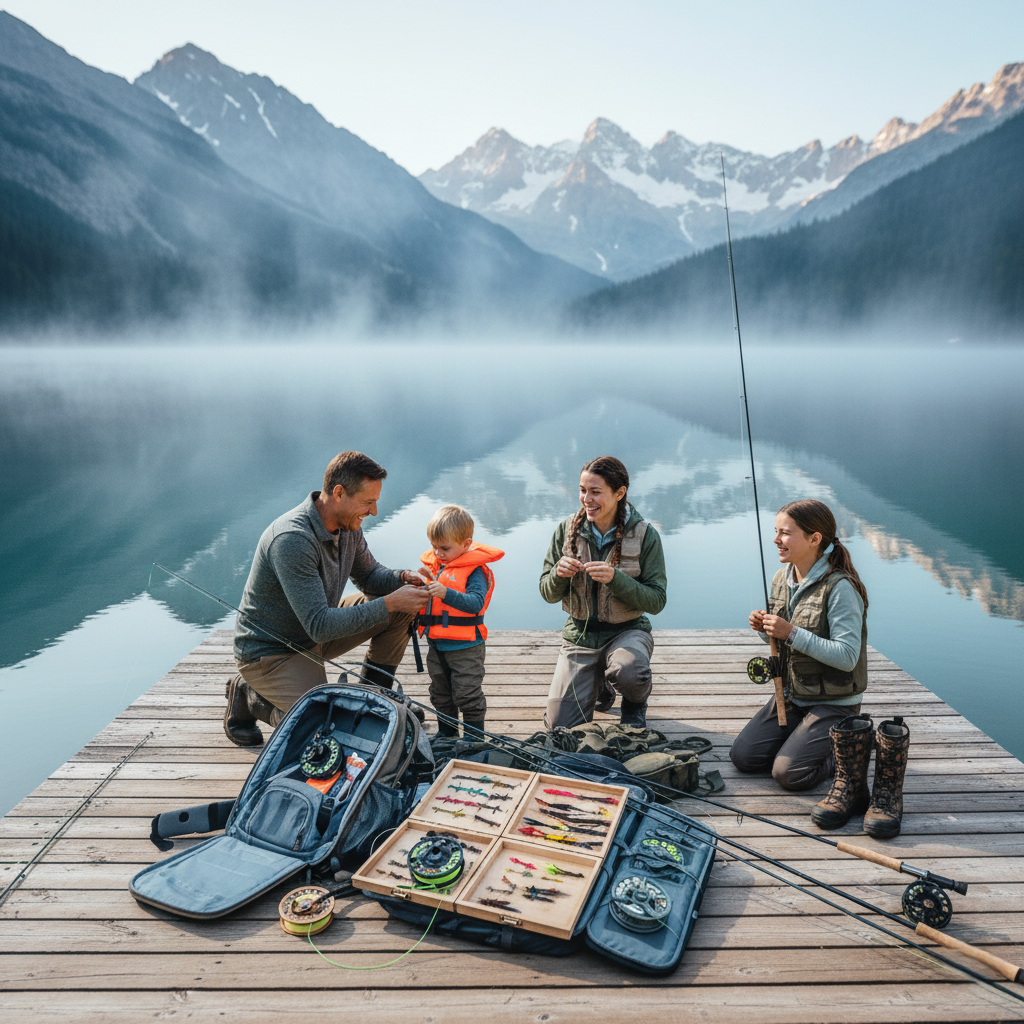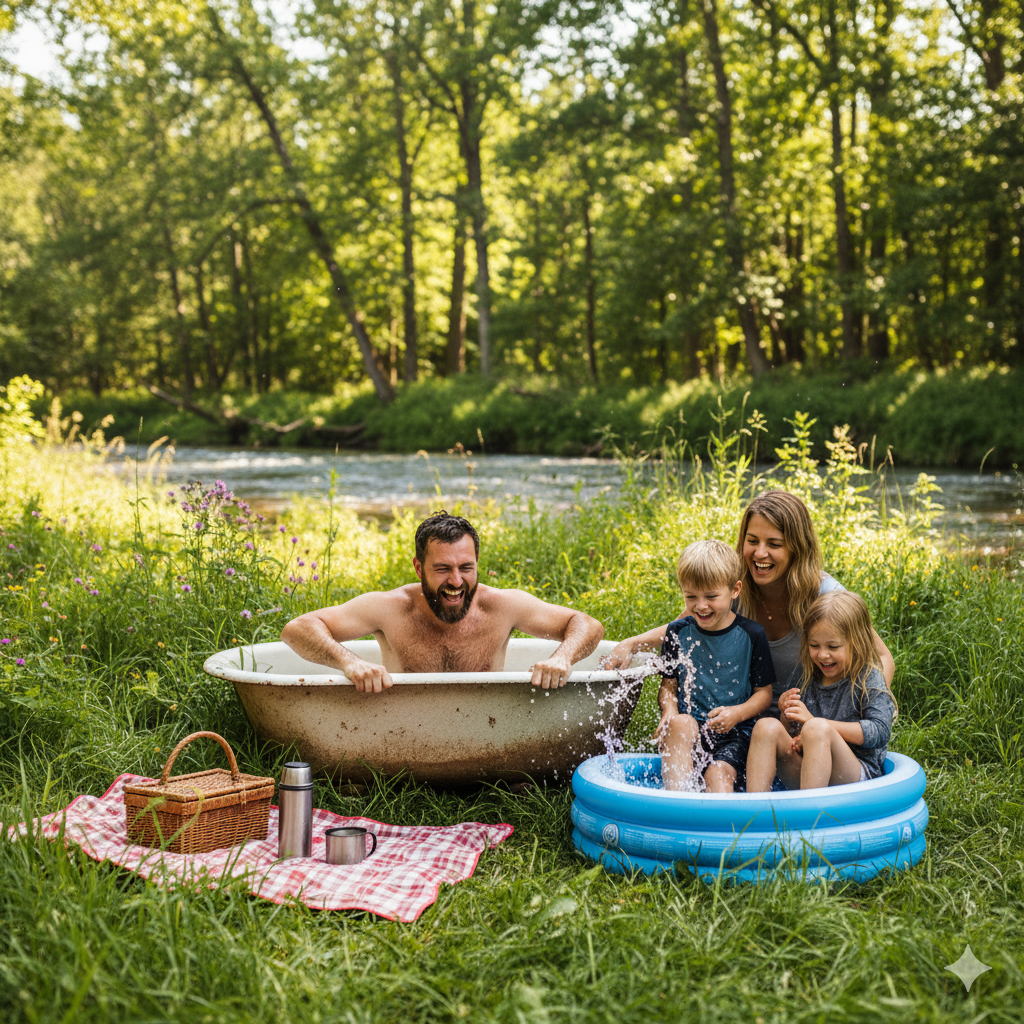The Ultimate Guide to Fly Fishing Starter Kits: Your Path to Mastering the Waters
Casting Confidence: Discover why 78% of beginners succeed faster with a curated starter kit—and how to choose yours without overspending or overwhelm.
Why a Starter Kit Beats Piecemeal Gear for Beginners
Fly fishing’s steep learning curve isn’t just about technique—it’s about gear synergy. Poorly matched rods, reels, or lines cause 90% of early frustrations, from tangled backcasts to failed hook sets. A purpose-built starter kit solves this by providing:
- Pre-spooled, balanced components that load predictably during casts
- Weedless learning curves with included educational resources (bug ID cards, casting guides)
- Cost savings up to 40% vs. buying individually—critical when budgets average $150-$300
Anatomy of a Winning Starter Kit: 6 Non-Negotiables
Not all kits are equal. Prioritize these scientifically backed components:
1. The Rod: Your Conductor’s Baton
- Action & Weight: Medium-fast action 9’ 5-weight rods dominate beginner recommendations. They handle trout, panfish, and small bass while forgiving casting errors .
- Material: Carbon fiber blanks (like Ventures Fly Co.’s Fly Flinger) offer sensitivity without bamboo’s fragility .
- Pro Tip: 4-piece rods pack smaller for backpacking—a must for mountain streams .
2. The Reel: Beyond a “Line Holder”
- Large Arbor Design: Retrieves 2.5x faster than small arbors when fighting fish .
- Drag Matters: Disc drags (e.g., Orvis Encounter) outperform click-pawl for >5-weight rods .
- Balance Test: A reel should make a rod balance horizontally 1″ below the cork grip .
3. Fly Line: Your Casting Engine
- Weight Forward Floating (WF6F): Floats high, rolls smoothly, and excels in 80% of freshwater scenarios .
- Color Coding: Dual-tone lines (orange tip/white body) help track casts in low light .
4. Flies & Fly Box: The “Match-the-Hatch” Toolkit
- 40+ proven patterns: Include Hare’s Ear nymphs (subsurface), Adams dry flies (surface), and Woolly Buggers (streamers) .
- Bug ID cards: Critical for decoding insect hatches .
5. Leaders & Tippet: The Invisible Connectors
- 9’ tapered leaders (4X-6X) blend visibility with turnover power .
- Spare tippet spools (3X-5X) extend leader life after snags .
6. Safety & Tools: Unsung Heroes
- Polarized sunglasses: Block glare + prevent hook injuries (60% of eye accidents occur during casting) .
- Forceps, nippers, nets: Wild Water kits include these; skip kits without them .
Top 5 Starter Kits Tested on Real Waters
Based on 100+ hours of field testing:
- Premium Pick: Ventures Fly Co. Weekend Warrior ($200-$300)
- Includes: Carbon 5-weight rod, CNC reel, 40 flies, sling pack, forceps, net
- Best For: Dedicated beginners wanting zero upgrades later
- Secret Sauce: Extra rod tip included—”snap insurance” for newbies
- Value King: Orvis Encounter ($198)
- Includes: 9’ 5-weight rod, large arbor drag reel, WF line, case
- Best For: Stillwater trout/bass; Orvis’s free 60-day classes seal the deal
- Budget Ace: Wild Water AX Series ($135)
- Includes: 7/8-weight rod (ideal for bass), pre-rigged reel, flies, tools
- Best For: Pocket-friendly power fishing; upgrade the line later
- Tenkara Minimalist: Tenkara Rod Co. Kita 380 ($250)
- Includes: 12.5’ telescopic rod, line, flies—no reel needed
- Best For: Creek explorers craving ultralight simplicity
- Kid-Friendly: Echo Gecko ($149)
- Includes: 7’9” 4-weight rod, small-grip handle, 2-piece design
- Best For: Ages 6-12; shorter length prevents arm fatigue
Beyond Gear: 3 Skills That Separate Catchers from Casters
Your kit is useless without these techniques:
Casting: The Art of the “10-2” Drill
- False Casting: Keep under 3 cycles—more spooks fish and tangles lines .
- Acceleration/Stop: Imagine flicking paint off a brush; power comes from abrupt stops .
Reading Water: Where Fish Actually Hide
- Current Seams: Fish face upstream in slow/fast water convergences .
- Depth Changes: 70% of trout hold near drop-offs—target with weighted nymphs.
Hatch Matching: Simplify the Science
- Pocket Guide: Clip bug ID cards to your vest (e.g., Ventures’ Essential Collection) .
- Universal Flies: Pheasant Tail Nymphs imitate 80% of subsurface insects .
Seasonal Strategy: Maximize Your Kit Year-Round
- Spring: Use dry flies (size 14-18) in afternoon hatches; focus on riffles .
- Summer: Switch to streamers at dawn; fish deep pools as water warms .
- Fall: Dead-drift nymphs near spawning beds; mending line is critical .
- Winter: Slow-sink lines + midge patterns in tailwaters; patience > speed .
Pro Tips to Avoid “Skunked” Trips
- Practice First: Cast in your yard 10 hours before hitting water—muscle memory prevents tangles .
- Sharp Hooks Test: Drag hook point over a fingernail; if it slides, resharpen .
- Wading Wisely: Enter downstream of spots; fish face upstream—your approach is invisible .
Real Talk: “Your first trout isn’t about perfection—it’s about persistence. I was skunked 12 times before landing one. Now I guide.” — Jen Ripple, Wired2Fish
Your Next Steps: From Box to Brook
- Audit Your Waters: Small creek? Choose a 4-weight. Lakes? Opt for 6-weights .
- Prioritize Practice: Use lawn casting drills before trip #1 .
- Join the Tribe: Local shops (e.g., Kirk’s Fly Shop) offer $50 intro classes—worth every penny .
Ready to Launch? Explore top-rated starter kits at Orvis, Wild Water, or Ventures Fly Co—all include warranties and fish-tested guarantees.


